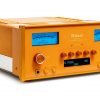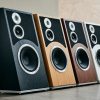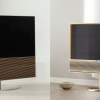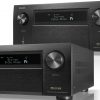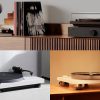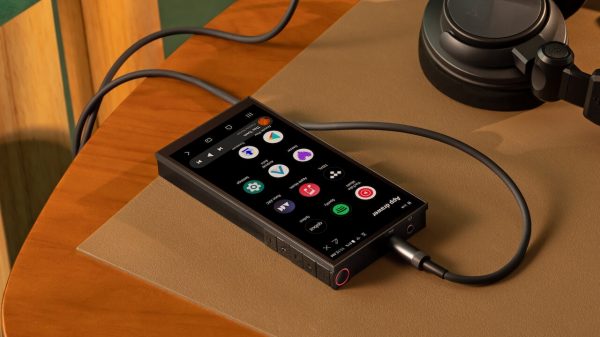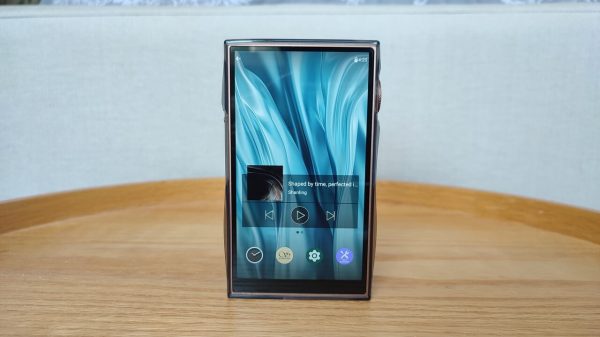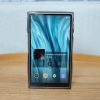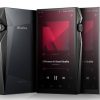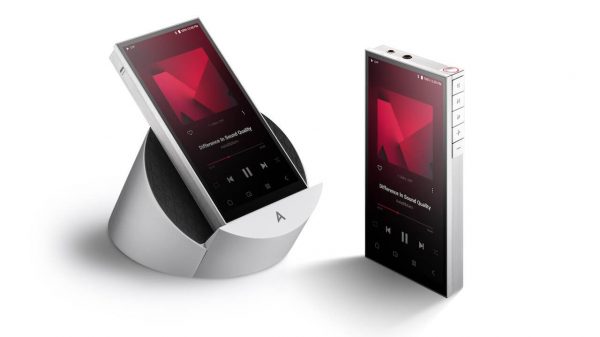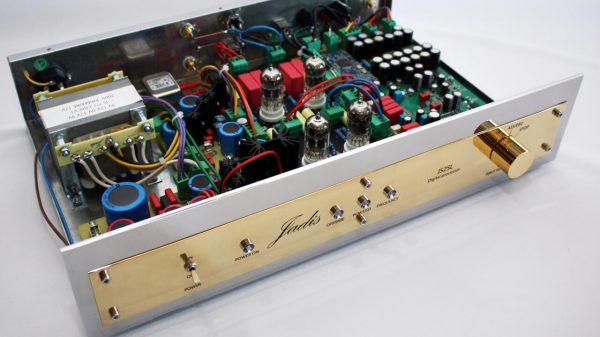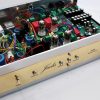It might surprise some to discover that Cayin has been manufacturing high-end audio components for 30 years; the company started with tube amplifiers back in 1993 and I was one of the first to bite. Listening to that first product, my initial reaction was that if they could build off this engineering success, they might do really well long-term.
As it turns out, it wasn’t beginner’s luck and they now offer almost every component you can imagine including loudspeakers, DAPs, CD players, and DACs.
More recently, Cayin jumped into the personal audio space with the N3 DAP; the product offered so much performance for the money, that I purchased 3 of them for members of my family and 2 of them are still being used on a daily basis.
Unlike some other brands, Cayin has kept its focus on affordability, usability, and only offering what it believes consumers actually need from a DAP; with a few exceptions because the Head-Fi community demanded a wireless flagship model.
That original N3 was a file player only because streaming had not yet taken hold in 2017 as far as DAPs were concerned; their subsequent models became bigger, more complex, offered wireless streaming and a long list of other features.
That also came with a substantially higher price tag; the first generation N3 sold for $199 USD whilst the N8 DAP was introduced at $2,999 USD.
$3,000 is a lot of money for any source device, let alone a portable one, but the N8 has proven to be a world-class product that offers reference sound quality, superb build quality and features, and has been universally praised as one of the top 3 DAPs that one can buy.
The Changing Landscape
To say Cayin has come a long way in a short time is an understatement when you consider that they started with the N3 in late 2015 and 8 years later have models ranging from the entry-level N3ii to the mid-fi N6ii, to the flagship N8ii. For those not interested in carrying a DAP, Cayin introduced one of our favorite dongles, the RU-6, and a world class portable amplifier in the C9.
Unfortunately, things have changed rather dramatically in the portable audio world and what sold well in 2020 is not necessarily popular in 2023.
For starters, there are very few affordable DAPs right now because consumer demand has shifted to high-end DAPs with Wi-Fi, streaming support, bi-directional Bluetooth, and Android operating systems with very fast performance.
The flood of Dongle DACs have eroded the market as 90% of the cost of a DAP is essentially the same as a phone (screen, processor, radios, etc…) and adding a dongle to an existing device can offer similar performance at a much lower cost.
When I first reviewed the N3, its biggest competitors were the Fiio X3 and newly released N7, the Sony A Series, and the Astell & Kern AK70Mk2. Today, consumers have Hiby, Shanling, Lotoo, Luxury & Precision, and IBasso in addition to the Sony, Fiio, and Astell & Kern models. It’s a tough market and lines between budget and mid-tier and flagship are blurry at best.
That is where the new Cayin N7 enters the market. Based on the name and price at $1,999 USD, it is firmly planted between the mid-fi N6ii and the flagship N8ii but don’t expect a DAP that splits the difference between the two as the N7 is a new direction for Cayin.
Also worth noting, Cayin had used the “ii” suffix to denote its Android-based DAPs, but the N7 breaks with that tradition.

What’s in the Box?
Cayin has always spent on the packaging but without overdoing it and that remains the case with N7; the DAP arrived in a gold and black lift-top box with the player nestled in a foam surround and the accessories secured below.
The kit comes with the N7, a pair of screen protectors (one pre-installed), a charging cabled, a leather case (nice touch), a pair of 2.5mm adapters for 3.5mm and 4.4mm ports (since the N7 does not have a 2.5mm port) and a manual.
Lifting the N7 out of its protective recess, the first thing one notices is the heft and size of the player. While slightly smaller than the N8ii, the N7 is still on the larger side at 5.5″H x 3″W x 1″D and tipping the scale at almost 16 ounces.
The weight should be expected with the solid aluminum chassis which is CNC milled from a single billet and then bead-blasted. The top and bottom are flat while the sides have a nice rounded shape that makes the N7 a more comfortable fit in the hand.
Nearly the entire front panel is display (5″ 1920×1080) with only an LED below it to display sample rates. The rear panel is glass as well; Cayin has certainly not skimped on the industrial design or construction quality of the N7.
The Design

The controls are mostly down the right side of the player with 4 buttons offering power, back, play/pause, and forward. The power button is slightly larger and easier to identify (and avoid) by touch when in a pocket and all of the buttons have a nice tactile response.
One caveat is with the case installed, I did lose the ability to feel the difference in button size and instead had to count from the top down. The left side houses the micro-SD card slot (again case has to be removed to access) while the volume control is the sole feature of the top.

The large gold volume knob sits horizontally on the top with enough overhang to be easily adjusted from front or rear; the positioning and design makes it easy to manipulate and also difficult to change accidentally.
Ports are found at the bottom of the player with a row of 3.5mm and 4.4mm ports offering both LO and PO options with an I2S port and a USB Type-C port in the row below that.

This is where I ran into my first issue with the player. The PO ports are to the right which means that the balanced headphone port I use most frequently sits immediately above the USB charging port and cables with large housings around the jack obstruct access to the USB port so the user is forced to decide to either listen or charge but not both.
Another concern for new users is that the case obscures the labelling so please remember line-out ports are to the left; the headphone jacks are on the right side.

The USB Type-C port can also serve as an S/PDIF out using the cable that ships with the N8ii. The cable can be purchased separately but is fairly well hidden on the Cayin site and is often hard to find.
My previous comments might sound like I’m not a big fan of the case but it is indeed quite well made, offers adequate ventilation, and I particularly like the magnetic flap closure. I do wish they would add a cut-out for the micro-SD slot but almost all makers don’t so that really can’t be considered a strike against Cayin.
Internal Technology
The N7 utilizes a Snapdragon 665 processor with 4GB of RAM and 64GB of internal storage for apps and music. The aforementioned micro-SD slot accepts up to 1TB cards for additional storage space.
The included documentation explains that Android OS 12 is optimized for audio “task” but not for app performance; my experience would suggest that the OS is more than adequate as I did not experience any lag when shifting between various operational modes locally.
I did experience some lag with Spotify and TIDAL playlists but that may have been an issue with the streaming platforms themselves and not the player.
Connectivity options include both 2.4 GHz and 5 GHz Wi-Fi along with bi-directional Bluetooth 5.0; that includes support for LDAC, aptX, UAT, and AAC.
Hiby Cast is included for streaming from a smartphone, tablet, TV, or computer to the N7 via Bluetooth.

In addition to accepting a Bluetooth source, USB can be used as a digital input (or output) with an option to disable charging when using the N7 as a transport so it doesn’t discharge another device unnecessarily.
The I2S interface provides yet another option for those with DACs that have I2S inputs. I tested the N7 with a Gustard X16 in order to try out the I2S connection.
While the component list is solid, what differentiates the N7 from other players in the same market space is the DAC itself. Most DAPs are built around Delta-Sigma DACs because they are chip-based, easy to implement, and have minimal space requirements.
A Different DAC Path
Cayin went a different route with the N7 and instead of sourcing a chip DAC, designed a discrete 1-bit resistor direct DSD DAC. This is not a ladder DAC so don’t confuse it with R-2R as it fits somewhere between a full ladder and a Delta-Sigma DAC.
What are the differences? Let’s take a quick look at what Cayin designed and why it might have been the best option for this DAP.

Delta-Sigma DACs first convert the PCM encoded input to a bit-stream (DSD) and then use that signal to create the output. That means that almost all Delta-Sigma DACs are essentially oversampling PCM which can lead to pre-ringing and distortion. It’s just the nature of the design and most of feedback loops to lower but not eliminate those artifacts.
Ladder DACs (R-2R) can be fantastic but rely on every resistor being 100% matched to all the others which never happens in the real world. Those variances in resistors also lead to distortion so neither the Delta-Sigma or the R-2R design is immune to distortion.
The 1-bit DSD doesn’t require the over-sampling of the Delta-Sigma, nor does it require the precision resistors of the R-2R design; it is able to side-step those issues for a cleaner output with a more reasonable cost than similar R-2R designs and without the inherent drawbacks of Delta-Sigma feedback loops.
The 1-bit DSD DAC isn’t a new technology as high-end CD players have long since used them and we’ve seen more than one in the high-end home audio space over the years. What is new is the use of this DAC in a portable design and to my knowledge, the N7 is the only one of its kind although rumors of an upcoming A&K model may change that shortly.
The downside of 1-Bit DSD DACs is they only accept a 1-bit DSD input so some other chip ahead of the DAC has to convert PCM to DSD. That is handled by an FPGA chip called an audio-bridge that handles conversion of PCM up to 32-bit/768kHz or MQA and converts them into a single bit stream to feed to the DAC.
Some will note that this essentially decouples the two parts of a Delta-Sigma DAC into pre-process (Delta) and 1-bit DSD DAC (Sigma) and indeed that is exactly what is happening inside the N7, but by splitting the two processes, the N7 has more flexibility, and control as the FPGA can be re-programmed where as a SoC-based design cannot.
Output from the DAC next arrives at a set of discrete low-pass filters that strip away the portions of the signal well above the audible range and then feeds a set of 4 discrete amplifiers creating a fully balanced signal path from input to headphone jack. Even the volume control has 4 separate channels to maintain the balanced pathways.

Power
The amplification provides user switchable class A or AB modes for either a smoother cleaner performance with class A or a more energetic and livelier version with AB. In this case, there is not a noted power difference in output as is sometimes seen, so the N7 is rated at 500mW (32 ohms) in either mode.
From a power perspective, the Cayin N7 uses a 9000mAh lithium battery and an impressive power supply design to ensure the cleanest power arrives at the signal path components.
The result was roughly 8 hours of listening time (balanced output, high gain, class AB) in my testing before needing to recharge the N7. Switching to class A loses about an hour on the same settings.
The N7 won’t compete for the battery life trophy but before disparaging it, remember that most other DAPs would fare no better with 512DSD content. The N7 does support PD2.0 fast charging so recharging took about 4 hours from completely discharged using a proper PD2 charger.
Do note that standard 500mA USB phone chargers will take considerably longer and if charging and listening at the same time, the discharge can actually outrun a standard USB charger so investing in a PD2.0 compliant 2.1Amp charger is a necessity with this player.
Operating System
The N7 uses a modified Android 12 OS that gives access to the Google Play Store and a wide range of music streaming platforms. The default music app is the Hiby Music app which is common to Cayin DAPs and is also used by quite a few other DAP makers as well as being available as a smartphone download on most app stores.

It is a reliable and functional application; users still have the ability to add others via the app store.
Cayin has provided a set of shortcuts for the most common settings; including gain, amp mode, output mode (LO/PO), Wi-Fi, Bluetooth, and I2S/S/PDIF. Users will find volume controls, maximum volume, wheel direction, and others buried one layer deeper under “Audio” settings.
Sound
With a $1,999 USD asking price, it made sense to use the N7 with as many high-end IEMs and headphones as I could over a period of a few weeks; including the Letshouer Cadenza 12, UE Live, Campfire Andromeda, Beyerdynamic T5p (2nd generation), HiFiMAN Arya Stealth, and the Fostex TH900.
Right out of the gate, the N7 proved to be a good mix of power and control with very little hiss when using very high sensitivity IEMs (Campfire Andromeda) on the low gain setting. That degree of power also came in handy with larger over-ear headphones without running out of headroom as long as I ran them on the high gain setting.
The Campfire Andromeda almost always exhibit some hiss but through the N7, it was extremely minimal and not evident at normal listening levels.
Bass definition and depth were quite good from the sub bass though the mid bass range; the overall presentation was well balanced and controlled without any sense of bloat or loss of detail.
We did discern a very small degree of added emphasis in the mid bass but as we listened to all of the aforementioned IEMs and headphones, we started to feel that it was the N7 doing a better job than lesser sources in regard to impact and definition in that range.
That high level of performance continued into the upper bass and lower midrange; excellent clarity and detail supported by a very accurate tonal balance that added just enough color and weight to male vocals. The N7 did push vocals through the instrumentation but it never felt exaggerated on any tracks.
What did surprise us the most was the treble performance; balanced, detailed, airy, natural, and with zero fatigue listening to some rather terrible recordings. Cayin has tuned the N7 to deliver one of the best sounding top ends from any portable source below $2,000 and it might challenge some of its more expensive competition as well in that regard.
The soundstage performance is really defined by the IEMs and headphones on the other end and the N7 never failed to push the boundaries in that regard. On open-back headphones, the soundstage was extremely wide and deep with rock solid imaging. Closed IEMs didn’t offer the same degree of spaciousness but it was clear that the N7 was not the weak link.

The ability to switch between the two amplifier modes was interesting because the impact was rather profound; the class A mode had a warmer tonal balance with every IEM and headphone and the bass response was heavier and more resolute.
When I switched over to class AB, the music had superior dynamic performance and the battery life improved. Thinner sounding headphones benefitted from the added coloration whilst darker models preferred the control, clarity, and speed of class AB.
Outputs
Using the N7 as a source and connecting via USB to the RME ADI-2 FS Black and via I2S to the Gustard X16 showed the N7 to be a capable transport as well for those looking for a portable that can also feed their home system.
I could find no coloration or clarity issues with either the USB or the I2S outputs so the battle over separating the clock signal in I2S vs the integrated clock of USB won’t be settled here as both options sounded equally as good.
Using the line out / pre-amp outputs provided an easy way to feed my main system via a 4.4mm to XLR cable to my pre-amp. Here the same mix of performance and control was on full display.
It should also be noted that with the line outputs, the amplifier modes have no zero impact on the output so one should set it to class AB as a battery saving measure only.
The N7 can transmit Bluetooth so it made perfect sense to try the DAP with the Sennheiser Momentum TWS3, Sony WF-1000XM4, Focal Bathys, and the Bowers & Wilkins Px7 S2. LDAC, AAC, and aptX all functioned properly and the Cayin proved to be a very stable and excellent sounding source.
All performed as expected with no cut-outs and solid range (10-20 yards depending on obstacles). Pairing was straight forward and once established devices reconnected without intervention.

Final Thoughts
The N7 introduction fills a niche in the Cayin line that used to be filled by the N6ii and whilst it lacks the modularity, it incorporates most of the best features of the earlier model while adding a few from the flagship N8ii as well.
I’ve never been a big supporter of the modular players because I think the efforts are misplaced as processors and Android versions are advancing more rapidly than audio circuits and as such, most players become obsolete at the same pace regardless of modularity.
So is the N7 the replacement for the N6 models? Time will tell but it has been interesting to watch the trend back away from modular designs as Cayin, FiiO, and iBasso all introduced modular models at about the same time. Fast forward to 2023 and only iBasso seems to be committed to that approach and even then its only amplifier modules rather than DAC/Amp modules like the N6ii offered.

Conclusion
Cayin took a step backwards with the N7 stripping out some unnecessary features and in the process took a huge leap forward when it comes to performance and usability. Home theater enthusiasts have grown tired of AVRs that offer dozens of features and settings that they will never utilize when watching a film or listening to music and the same can be said of the current generation of expensive DAPs.
The Cayin N7 successfully avoids that by focusing on the DAC and extremely capable headphone amplifier.
At the same time the trickle down from the Cayin N8ii is evident with the discrete fully balanced amplifier design and the line-out/pre-out stage design which helps justify the $1,999 spend as you get most of the features of the $3,499 N8ii (less the nu-tubes and switchable amp stages) at a far more affordable price.
Sonically, the N7 is one of the best performing DAPs we have tested so far with excellent detail retrieval, tonal accuracy, speed, and resolution. None of the IEMs or headphones that we tried ran out of gas with the N7 and that makes it compatible with a very wide range of products.
When you consider its performance as a DAC, pre-amplifier, wireless streamer, and headphone amplifier, the Cayin N7 might become an issue for its more expensive sibling. The Cayin N8ii feels overpriced somewhat considering the similarities and just how close the performance is. The Cayin N7 feels like a smarter purchase and one that won’t lose its versatility anytime soon.
For more information: en.cayin.cn/features/7/15/592.html
Where to buy: $1,999 at hifigo.com



